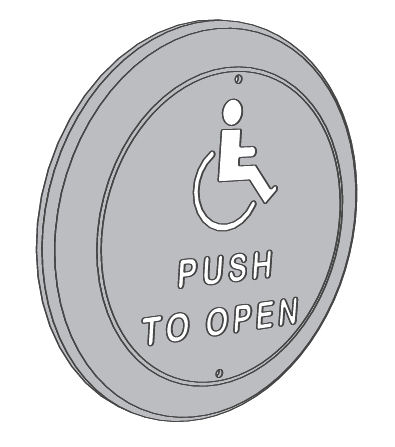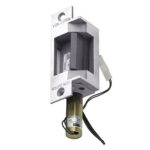 The 2007 edition of ANSI/BHMA A156.19 – American National Standard for Power Assist and Low Energy Power Operated Doors requires low energy operators to be initiated by a “knowing act”, which is described as “consciously initiating the powered opening of a low-energy door using acceptable methods, including: wall- or jamb-mounted contact switches such as push plates; fixed non-contact switches; the action of manual opening (pushing or pulling) a door; and controlled access devices such as keypads, card readers, and key switches.”
The 2007 edition of ANSI/BHMA A156.19 – American National Standard for Power Assist and Low Energy Power Operated Doors requires low energy operators to be initiated by a “knowing act”, which is described as “consciously initiating the powered opening of a low-energy door using acceptable methods, including: wall- or jamb-mounted contact switches such as push plates; fixed non-contact switches; the action of manual opening (pushing or pulling) a door; and controlled access devices such as keypads, card readers, and key switches.”
From A156.19:
1.1 Requirements in this Standard apply only to swing door operators. The operator types are power assist, and low energy power operators, for pedestrian use, and some small vehicular use. It does not address doors, finish or hardware. The activation of all doors described in this standard requires a knowing act. Included are provisions intended to reduce the chance of user injury or entrapment.
1.2 Doors that require higher speeds, forces, shorter time delays, and activating sensing devices shall comply with ANSI/BHMA A156.10 for Power Operated Pedestrian Doors and are not covered in A156.19.
As stated above, for low energy operators that are actuated by something other than a knowing act (such as a motion sensor), the requirements of A156.10 Power Operated Pedestrian Doors must be followed. This includes guide rails and safety sensors that are not typically required for low energy operators.
For the first time, A156.19 also includes guidelines for mounting actuators (push buttons) which are used to automatically open the door:
The knowing act switch should:
- preferably be located within 1-5 feet from the door, but never more than 12 feet.
- remain accessible from the swing side when the door is opened.
- not be located in a position where the user would be in the path of the moving door.
- be mounted so the user is in full sight of the door when activating the switch.
- have an installation height of a minimum of 34″ and a maximum of 48″ above the floor.*
* For projects in Massachusetts the mounting height must be between 36″ and 48″ above the floor.
You need to login or register to bookmark/favorite this content.






[…] Wall- or jamb-mounted contact switches, such as push plates. […]